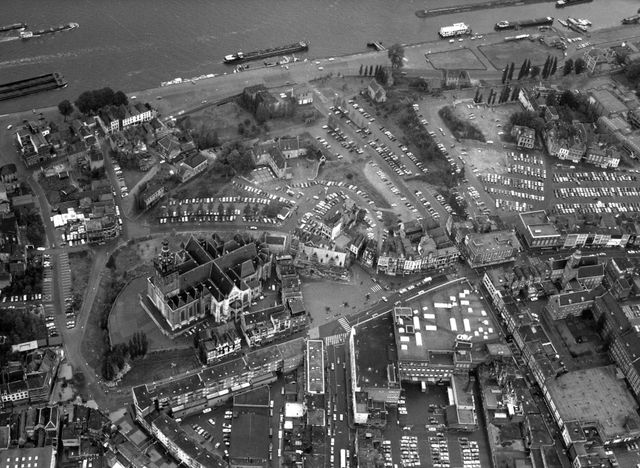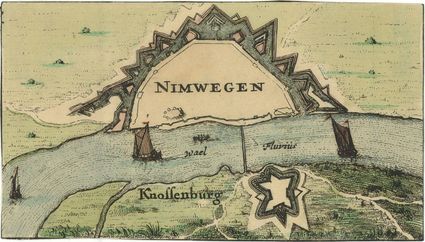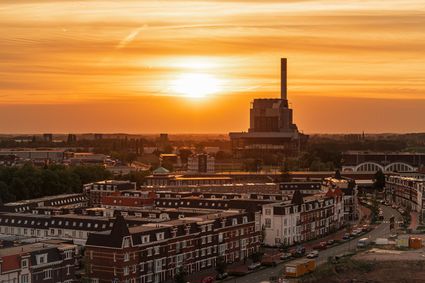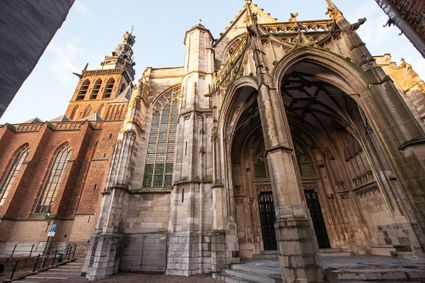Reconstruction, from a wounded city to a healthy city
Nijmegen is bursting at the seams with historical stories, ranging from leading figures to ordinary people, from neighbourhoods to political events. The Canon of Nijmegen encompasses the most important stories about Nijmegen’s history. One of these stories tells the tale of the city’s reconstruction. Nijmegen was among the cities in the Netherlands that were hit hardest by World War II, mostly because of the bombing of February 22nd, 1944; the fighting at the liberation of the city in September of 1944; and the months that followed when the city was part of the front line. Over 2200 citizens lost their lives. The material damage was great, especially in the city’s centre. More than three thousand homes, four hundred stores, fifty restaurants and cafes, seven churches, four cinemas, two bank buildings, and the train station, were destroyed or severely damaged. All that remained of the city hall were its blackened out walls.
1944 – 1947: the city’s reconstruction
The city centre looked like a wasteland. The urban planning department could, as it were, start with a clean slate. The city council took this opportunity to transform the inner city into an accessible modern city. The reconstruction plan was drawn up in phases between 1944 and 1947. The difficult choice between a historicising approach (a nostalgic and traditional cityscape) and a modernist operation (an open and contrasting modern cityscape) ultimately led to a pragmatic compromise. Heavily affected icons of the past, like City Hall and the Stevenskerk, were restored. The old street plan remained the same, but became more efficient, with more squares (for example, Plein 1944) and wide streets. As such, the Bloemerstraat and Augustijnenstraat were widened and the demolition of the – largely medieval – Dominicuskerk made room for the widening of the Broerstraat, creating extra space for cars. Trucks could now easily load and unload in dispatch courtyards, but pedestrians were given more space as well. The plan’s aim was a separation of functions, with an emphasis on the shopping function of the inner city, while keeping the creation of an office, entertainment, and religious centre in mind. Industrial companies no longer had a place in the city centre.

Aerial view of part of the Benedenstad and the city centre with the Stevenskerk and the Grote Mark in the middle of the picture; the Waal and the Waalkade at the top; the City Hall and Burchtstraat on the right
The city council approved the reconstruction plans in 1947. A permit from the state, crucial for financing the reconstruction among other things, took another couple of years to arrive. The reconstruction only came to fruition after the state permit had been granted. The city was alive and buzzing with construction-related activities, with an urge renewal tangible in the air. A wounded city was turned into a healthy city.
The people’s joy at the celebration of the “completion” of this reconstruction in 1956 was understandable, but not very realistic. A lot of large-scale changes would follow, like the construction of the HEMA, the municipal theatre and the construction of the tunnel underneath the train station.
Immerse yourself in the rich history of the oldest city in the Netherlands, because Nijmegen has a lot of stories to tell you. Curious? You can read all about it in this historical timeline.



